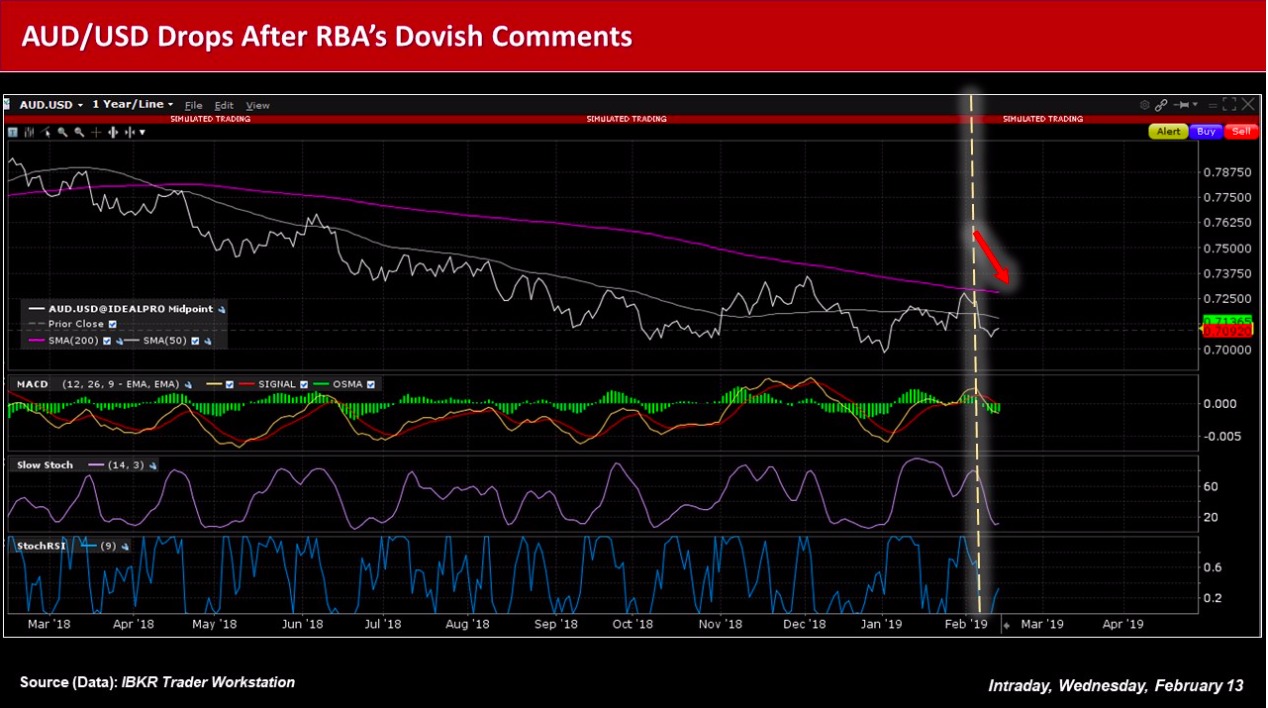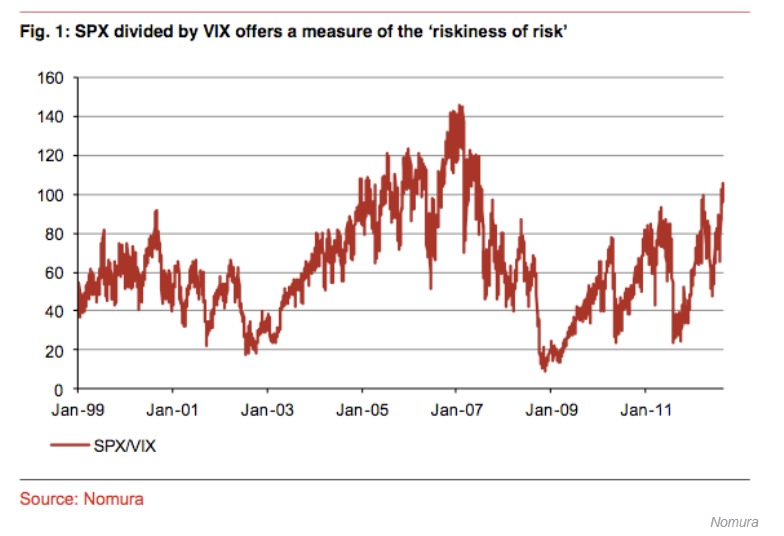By Steven Levine, Senior Market Analyst, Interactive Brokers
The Reserve Bank of Australia at its monetary policy meeting earlier in February elected to keep the cash rate at 1.5%, where it’s been since August 2016.
RBA governor Philip Lowe noted that Australia’s economy is set to grow by around 3% in 2019 and by a little less than that figure in 2020, mainly due to slower growth in exports of resources.
The growth outlook, he said, is being supported by rising business investment and higher levels of spending on public infrastructure.

Downside Risks
However, Lowe also observed that “some downside risks have increased,” including weaker-than-expected GDP growth in the September quarter on the back of a deceleration in household consumption and income.
Lowe added that the main domestic uncertainty continues to concern the outlook for household spending and the effect of falling housing prices in some cities such as Sydney and Melbourne.
At its recent meetings, the central bank said it has paid special attention to developments in the nation’s housing market, as well as how lower prices may impact construction activity and households’ spending decisions.
The RBA has also considered how the prospects for consumption growth would be affected if household income growth does not accelerate.

Balanced Risks
The RBA concluded that in light of recent data, as well as inherent outlook uncertainties, rate-setting risks have “shifted to be more evenly balanced,” compared to the previous tightening policy bias the bank had held.
The Board said it does not see “a strong case to adjust the cash rate in the near term” and will maintain its medium-term focus.
Marc Chandler, chief market strategist at Bannockburn Global Forex, recently noted that with the shift in the RBA’s position having become “increasingly clear,” it culminated in a cut in its GDP and inflation expectations, which helped drive the Australian dollar to its lowest level in more than a month (~$0.7060).
Technical Indicators
Chandler observed that the RSI is “overextended, but the Slow Stochastics show a bearish divergence and the MACDs crossed lower at the start of last week.”
He added that the Aussie has entered a band of congestion that extends to $0.7000, and while the “surge in the price of iron ore” has done the Australian dollar “little good,” if it ticks higher “some will try to make the link.”
Against this backdrop, the RBA is slated to release the minutes from its meeting, whereby market participants may receive further clues into the Board’s decision and outlook for the country’s economy.
Photo Credit: Bernard Spragg NZ via Flickr Creative Commons
The author does not hold any positions in the financial instruments referenced in the materials provided.
The analysis in this material is provided for information only and is not and should not be construed as an offer to sell or the solicitation of an offer to buy any security. To the extent that this material discusses general market activity, industry or sector trends or other broad-based economic or political conditions, it should not be construed as research or investment advice. To the extent that it includes references to specific securities, commodities, currencies, or other instruments, those references do not constitute a recommendation by IBKR or IBKRAM to buy, sell or hold such investments. This material does not and is not intended to take into account the particular financial conditions, investment objectives or requirements of individual customers. Before acting on this material, you should consider whether it is suitable for your particular circumstances and, as necessary, seek professional advice.Certain of the information contained in this article is based upon forward-looking statements, information and opinions, including descriptions of anticipated market changes and expectations of future activity. The author believes that such statements, information, and opinions are based upon reasonable estimates and assumptions. However, forward-looking statements, information and opinions are inherently uncertain and actual events or results may differ materially from those reflected in the forward-looking statements. Therefore, undue reliance should not be placed on such forward-looking statements, information and opinions.



